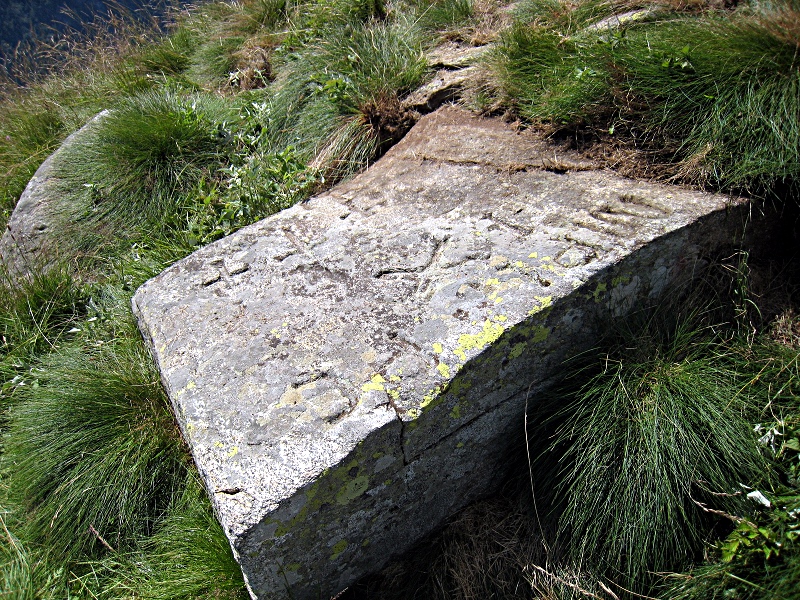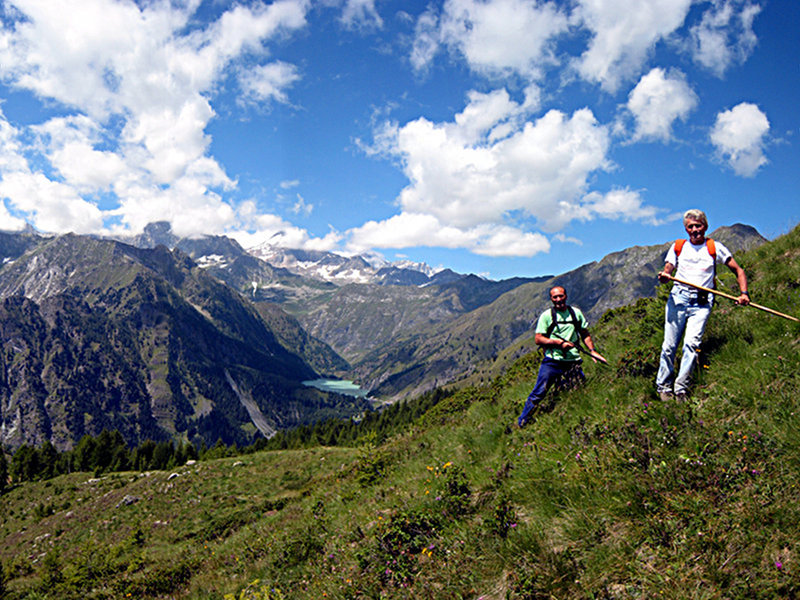The "pietra del merler" and the Charm of the Petroglyphs in Valle Antrona
- Trail Conditions: On foot
- Interest: Geology, Panorama
The discovery of the presence of several petroglyphs on a boulder situated in upper Valle Antrona dates back to 1986. The petroglyphs were found on a rock known as "pietra del merler", that is the name used to indicate the Nine Men's Morris game.
The rock is situated near Alpe Cama superiore, immediately below the summer pasture, and is an erratic boulder with a maximum length of 2.10 meters, a maximum width of 1.60 meters, and a thickness of 0.30 meters. It enjoys a dominating position over the valley, as it is often the case for engraved rocks. Its surface is entirely covered with petroglyphs, including: cup marks, sharpeners, magic squares, simple rings, cross or star-shaped drawings, writings, anthropomorphic figures, etc. If the written petroglyphs are without a doubt, at the moment, the last stage of the material analyzed, it is more difficult to discover their period and reason, although we think that they should be dated back to a not recent historical period. As a matter of fact, Valle Antrona was inhabited by man already in the Roman Age, as demonstrated by the archaeological finds of Rivera di Viganella.
The reason leading prehistorical men to draw petroglyphs is probably linked to the world of the transcendent and religion, something that has lasted in time maybe even only as a tradition, after the loss of the original meaning. This is also true for the petroglyphs of "pietra del merler", which are not a game.
(Taken from "Sentieri antichi. Itinerari archeologici nel Verbano, Cusio, Ossola" - Fabio Copiatti-Alberto De Giuli - Edizioni Grossi - Domodossola).







